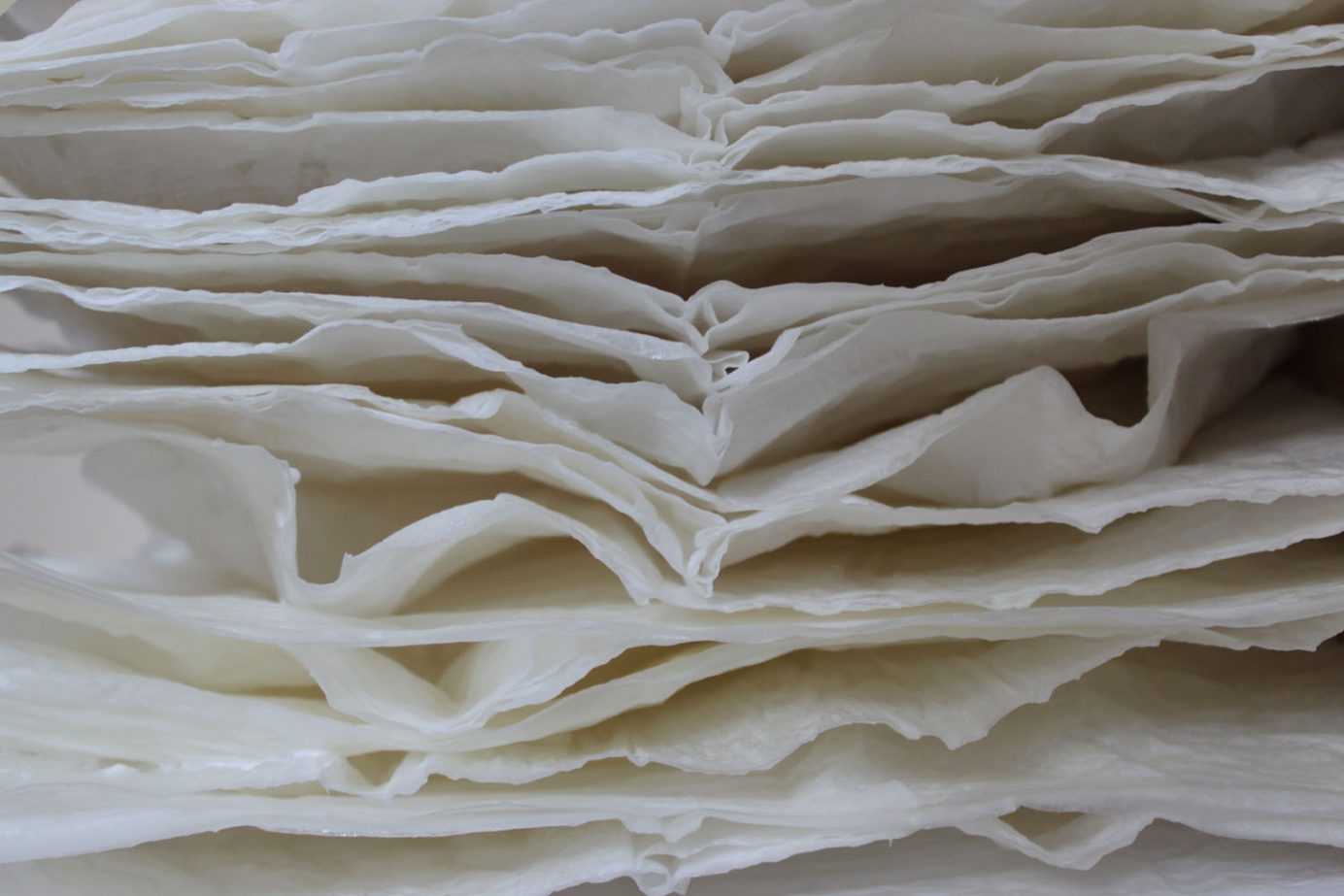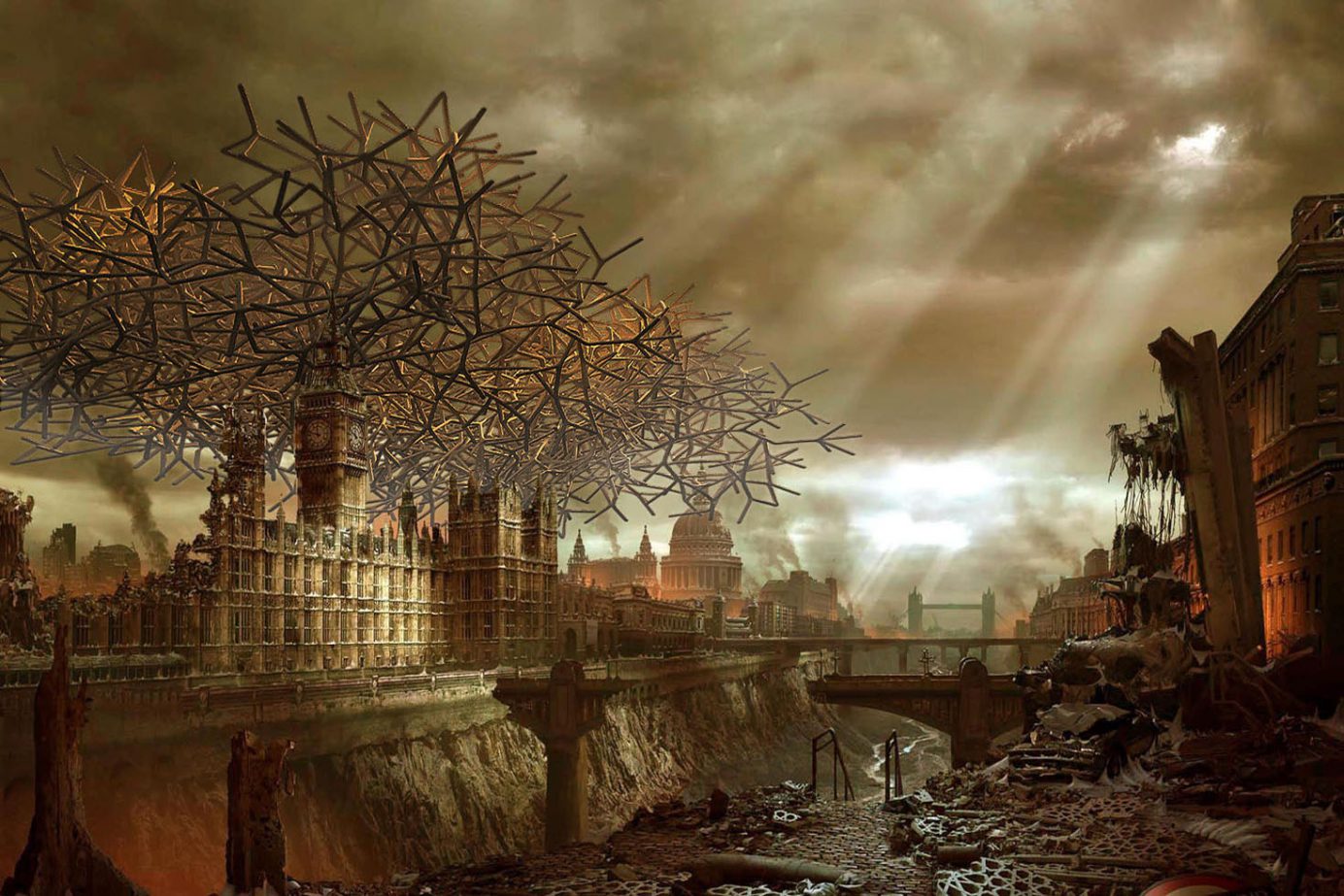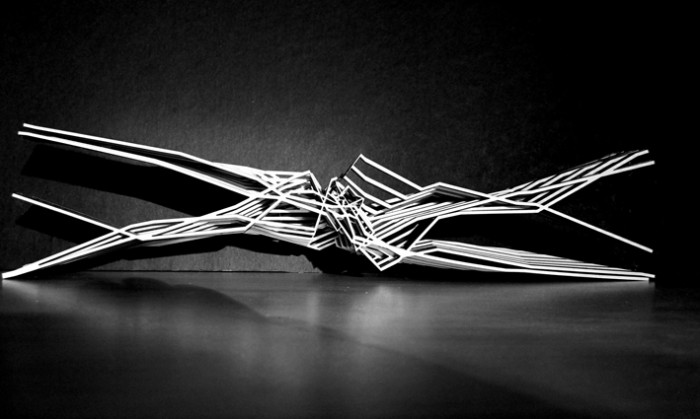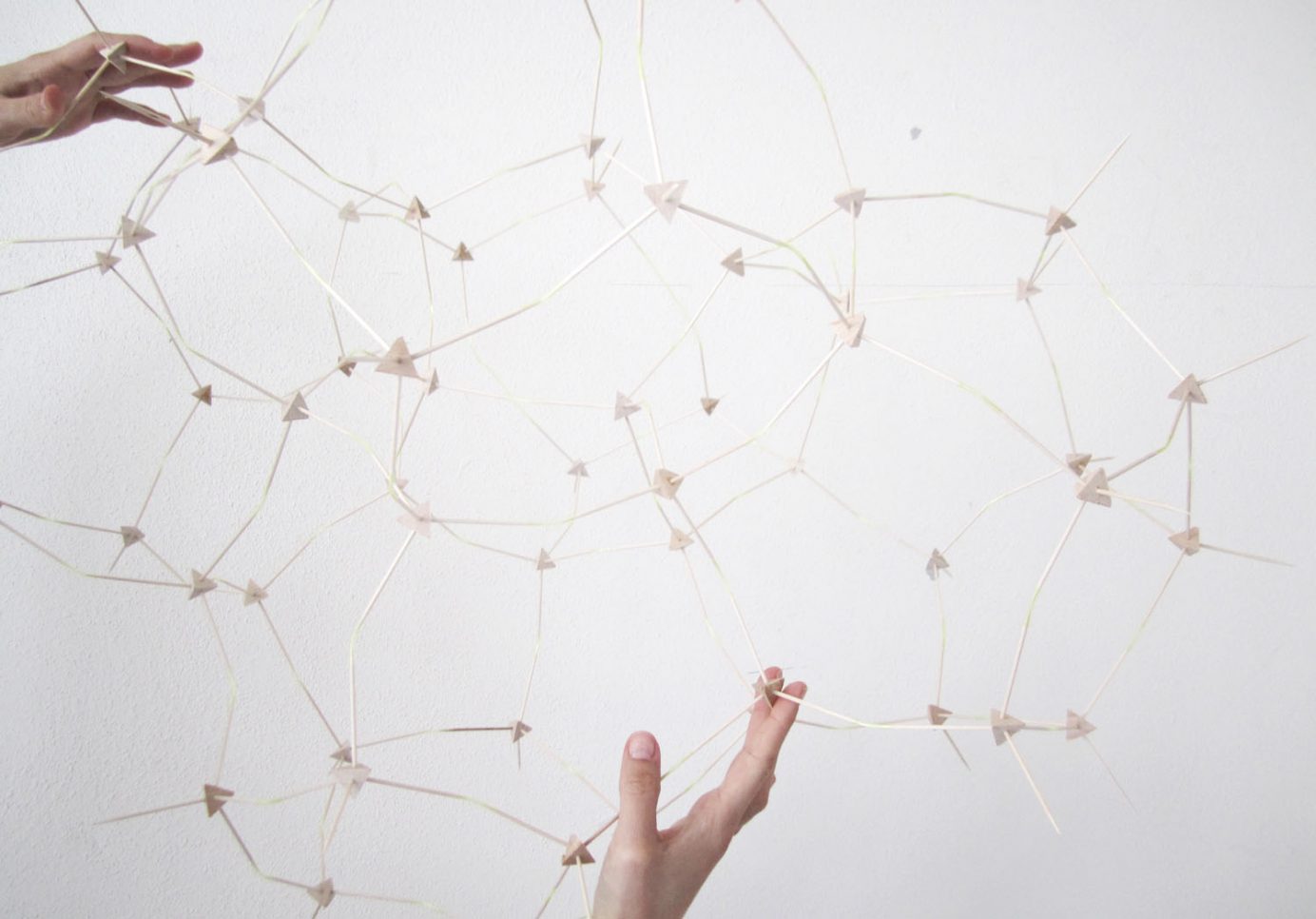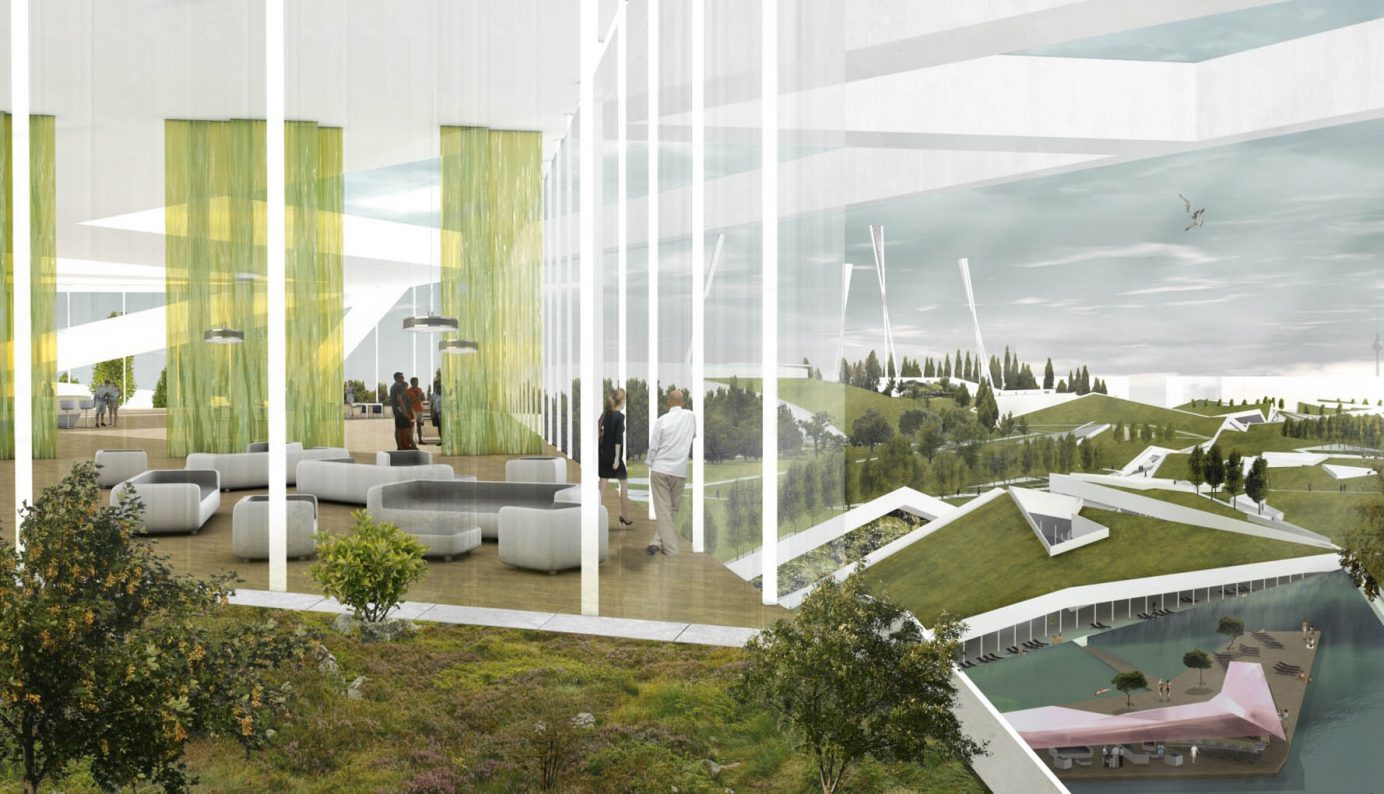Codes in the clouds – Dessau international graduate architecture school DRIPPING LINK – by Piangpim Thongsawang and Marzieh Gholami – 2011 This project is an investigation about the behaviour and principle of two natural material: Tissue and resin. Tissue can easily change into different shapes. It is made of wood fibers and composed of cellulose molecules. These individual fibers expand …
Codes in the clouds II – growth processes
TOPIC “Beyond the one-architect-one-machine dialogue, the milieu of adaptable machines must adapt further contacts with the real world. It must receive direct sensory information. It must see, hear, and read, and it must take walks in the garden.” N. Negroponte, 1970 C21 increasingly adopts physics, neuro-sciences, biology; architecture faces a paradigm shift in the 3rd industrial revolution – the age …
Codes in the clouds I – Material Behavior
Objective of studio is to arrive at a structurally-informed prototype for architecture, based on an understanding of the inherent, logical properties of material behavior and their corresponding collective assembly logic derived from its immediate environmental influences. The studio focuses on exploring the rule-based organizational system of material using advanced digital tools and computational ways of thinking and making. Students are …
CITC I – Flow of nodes
There are approximately 9000 sponge species which branches 3 taxonomic classes based on chemical composition of their skeleton. Calcarea, hexactinellida and demospongiae, in turnm consist of calsium carbonade, silicon dioxide and protein fiber. Venus’ flower basket, or Eupectella aspergillum in latin, belongs to the hexactinellida class. Glass sponges have elaborate skeletons made from silica that support the body. The biochemical …
Mauerpark Studio : Systematisches Jonglieren auf 10ha Grünstreifen
Dessau international architecture graduate school – 2010 Students: Martin Hoppe, Katharina Huch, Holger Kahle, Dimitri Klein, Milanov Vladimir Georgiev, Michael Wolf, Erik Zein STUDIO BRIEF

